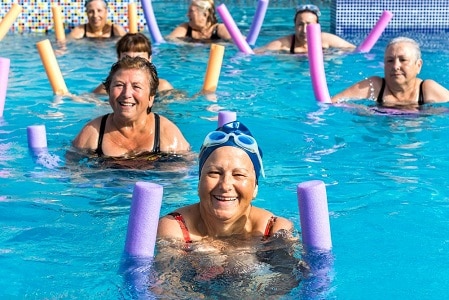By: Olivia Parker
Everyone has to move at various stages of their lives. Perhaps you may need to do things a bit differently as you get older, maybe take more time; nevertheless, you can successfully complete a move just like anyone else. There is no reason you should feel like your age prohibits you from getting the job done.
With the right planning, and by following the tips below, a senior citizen can plan and execute a successful move just like anyone else.
Don’t Go It Alone!
The first thing any senior needs is assistance. Planning something as complicated as a move is not something you want to do alone. Don’t be afraid to ask family members or friends to assist. A common misperception for any person moving households—not just the elderly—is that it’s shameful to ask for help. Don’t be too proud to contact others for support.
However, not everyone has close family nearby or friends that can make the time to help. If this is the case, don’t despair. There are knowledgeable, reputable moving companies who provide transport and offer services for helping seniors pack and secure valuables. Besides, even with family and friends to assist, you will eventually need a professional service to get the move done right. 
Plan It All Out
The most important thing you need to make your move go smoothly is formulating an appropriate plan that fits your schedule and physical abilities. As soon as you can, after you know a move will take place, start thinking about what you need to do.
A senior citizen moving plan can be broken down into three basic components: a schedule, the packing, and the actual move.
Develop and coordinate a schedule. You can alter the times or days based on when the most helpers are available. You can also determine how long you have before the moving company arrives and the house or apartment must be emptied.
- Take the Time to Pack Beforehand
Seniors will often have special keepsakes or valuables they have accumulated over the years. These items are important to you, and you want to have assistance to ensure they arrive in one piece.
Ensure you spend whatever amount of time necessary to plan the packing process for these things. Schedule enough time so that movers or family and friends can safely organize and pack everything in the home to your satisfaction.
By the time it is time to physically move everything, sentimental items should be packed safely and ready for transport.
- Prepare Your Team for the Move
No matter who is helping with your move, consider how many people will be doing the job and, more importantly, who among the group can carry heavier objects, like furniture, safely and without damage.
Senior citizens may want to seriously consider professional services for this sort of work.
Friends and family may have the strength and willingness to move heavy pieces of furniture, but they may not have the experience to do so correctly without injuring themselves or damaging the furniture. 
Follow the Plan to Protect Your Most Valuable Items
Go through all your belongings and ensure all the valuables are safely stored. Separate the most valuable items from the rest. You won’t be able to watch everyone all the time while they are moving your items out of the house. However, by separating the costly and/or sentimental possessions you have accumulated over your lifetime out from the more mundane items, you will ensure you can personally supervise their packing and handling. This will also make the moving process much less stressful.
Some people may try to pack while moving. However, with senior moving, this could become very complicated and stressful. Often, seniors have been living in the same residence for decades. Planning the packing up of all your precious memories may take longer. Whoever helps you with this must be patient and willing to take the time to meet your needs and expectations.
Don’t forget about labeling the boxes carefully. It will make unpacking a lot easier.
Moving Day
Since you will have packed your most sentimental items well ahead of time, when the actual moving date arrives it should be a very easy process. The moving company only needs to pack your larger pieces such as furniture, load the truck, and transport your items to the next location.
You may also want to consider having a couple of family members or friends available on the day of the actual move to help coordinate the activities and answer any questions the moving company may have.
It is very important that you hire a reputable and professional moving company. Moving senior citizens requires sensitivity because they may have lived in their residence for a long time, and patience because of their precious belongings. Only the most experienced and well-trained professionals should help the elderly move.

Safety
You should always be concerned about safety when moving. You should not try to move heavy furniture or boxes yourself. Let the professionals take care of that. Senior citizens can easily harm themselves, as they are not accustomed to heavy lifting or moving oversized or odd-sized objects.
If you do need to move something, ask someone to assist you. Even better, express your concerns or needs to the moving professionals and let them move the object(s) for you.
Final Thoughts
Moving is stressful at any age, but can be particularly so for the elderly. As long as you use these tips as a guideline, you should have a safe, smooth, and uneventful move.
The key is to plan ahead. If you can develop and implement a proper plan, you will have a safe and stress-free move. Recruit friends and family to help with the organization and carefully research your moving company to ensure they can accommodate your specific move.
That way, you can concentrate on planning the placement of your household effects in your new residence.





 Take a Dip
Take a Dip
 Get Gardening
Get Gardening 
